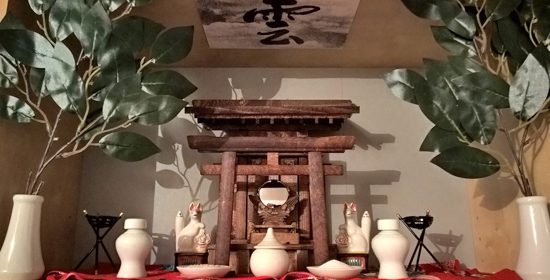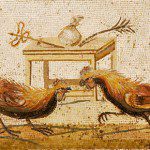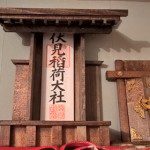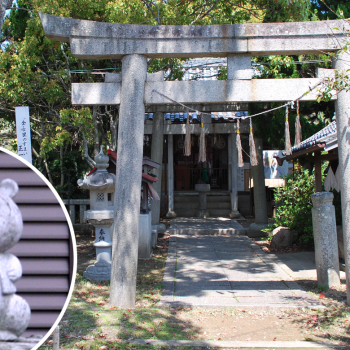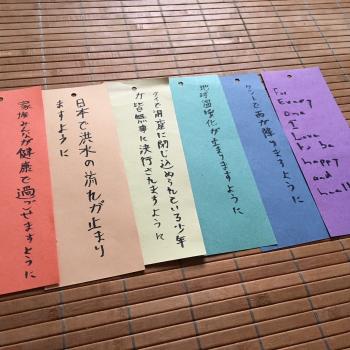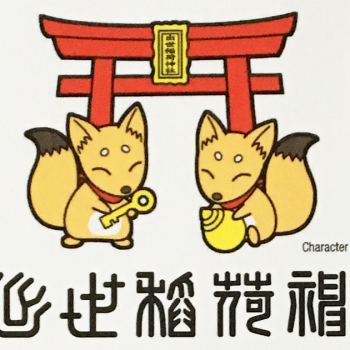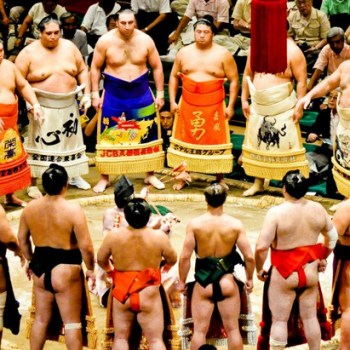4. Assembly
I was absolutely delighted with the kamidana. It was just as beautiful in the photos, and there were a few surprises too. Firstly, the candle holders came with a box of tiny candles to put on them. These candles, which are even smaller than the spell candles that Wiccans and witches often use, only burn for a few minutes and are designed to be lit during prayer time at the kamidana. They are not easy to find outside of Japan. Secondly, it also included a piece of paper with 雲, kumo, the kanji for “cloud,” written on it. This is for fixing above the kamidana when it is not possible to position it in the highest point of the house; it’s sort of a way of acknowledging to the kami that they should be enshrined at the highest point but regrettably circumstances prevent you from doing so. The spare room where I put the kamidana isn’t the highest point (we have an attic), so this was very useful.
I didn’t put it up straight away, though. It is best to assemble a kamidana on an auspicious day, and in Japanese tradition, that means a taian day.
In China and Japan, certain days are considered lucky or unlucky; this system is called rokuyō. Most Japanese calendars and diaries will tell you what degree of luck has been assigned to a particular day. The most unlucky days are called butsumetsu (literally, “Buddha-death”), and Japanese will try to avoid things like holding weddings on these days. Conversely, the most lucky days are called taian (“big peace”) and these are the best days for happy events and enterprises.
When my kamidana arrived, it was October, close to Samhain. It didn’t feel right to set it up during this time. Samhain is a time of death in Paganism, and Shinto is a religion that tends to avoid deathly associations. But looking at a rokuyō calendar, I noticed that November 1st was a taian day. Perfect, I thought. November 1st would also signify the end of Samhain and the start of the New Year according to the Celtic tradition – what could be a better time?
When November 1st came around, after coming home from work I tidied and vacuumed the spare room and took a purifying shower. I then put the omiya on its shelf, with a cloth underneath to help keep everything nice and clean, and inserted the ofuda. I made offerings of rice, water, sake and salt, lit the candles and intoned some norito (Shinto prayers). And that was that!
So that’s the story of how I came to acquire my kamidana. In future posts, I hope to introduce a little more about the kamidana and my practices in honour of the kami.

